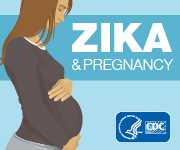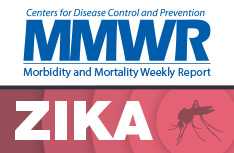Pregnant Women with Any Laboratory Evidence of Possible Zika Virus Infection, 2015-2017
US States and the District of Columbia
2,197
US Territories and Freely Associated States
4,504
As of September 13, 2017, a total of 42 additional pregnant women with laboratory evidence of possible Zika virus infection in the US States and the District of Colombia have been included since August 22, 2017. A total of 23 additional pregnant women with laboratory evidence of possible Zika virus infection in the US territories and freely associated states have been included since August 22, 2017.
What these numbers show
These numbers reflect the number of pregnancies with laboratory evidence of possible Zika virus infection that have been reported to the Zika Pregnancy and Infant Registries. This includes Zika virus infections that were acquired via travel, sexual exposure, or local transmission.
There are some delays in reporting. The numbers may increase or decrease as new cases are added, or information on existing cases is clarified such as an ongoing pregnancy becoming a completed pregnancy.
What these numbers do not show
These numbers reflect the number of pregnant women with any laboratory evidence of possible Zika virus infection reported to the Zika Pregnancy and Infant Registries. The numbers are reported monthly and are not updated in real time or as the cases are reported.
These numbers do not necessarily indicate recent transmission of Zika virus. The numbers are based on positive laboratory tests. Some of these laboratory tests can produce a positive result weeks after Zika virus infection has occurred. For more information about these laboratory tests see the laboratory website.
Where do these numbers come from?
These numbers reflect pregnant women reported to the Zika Pregnancy and Infant Registries. CDC, in collaboration with state, local, tribal, and territorial health departments, established these registries for comprehensive monitoring of pregnancy and infant outcomes with Zika virus infection.
The Zika Pregnancy and Infant Registries are protected by an Assurance of Confidentiality. Under the Assurance CDC is not reporting individual state, tribal, territorial, or jurisdictional data to protect the privacy of the women and infants affected by Zika virus.
How are these numbers used?
This information will help healthcare providers as they counsel pregnant women with Zika virus infection. It is essential for planning at the federal, state, and local levels for clinical, public health, and other services needed to support pregnant women and families affected by Zika virus. The data collected through these registries will be used to update recommendations for clinical care and to improve prevention of Zika virus infection during pregnancy.
What are the outcomes for these pregnancies?
Visit CDC’s pregnancy outcomes webpage for updated counts of pregnancy outcomes with birth defects related to Zika virus infection. Most of the pregnancies monitored by these systems are ongoing. CDC will not report outcomes until pregnancies are complete.
- Page last reviewed: September 29, 2017
- Page last updated: September 29, 2017
- Content source:





 ShareCompartir
ShareCompartir